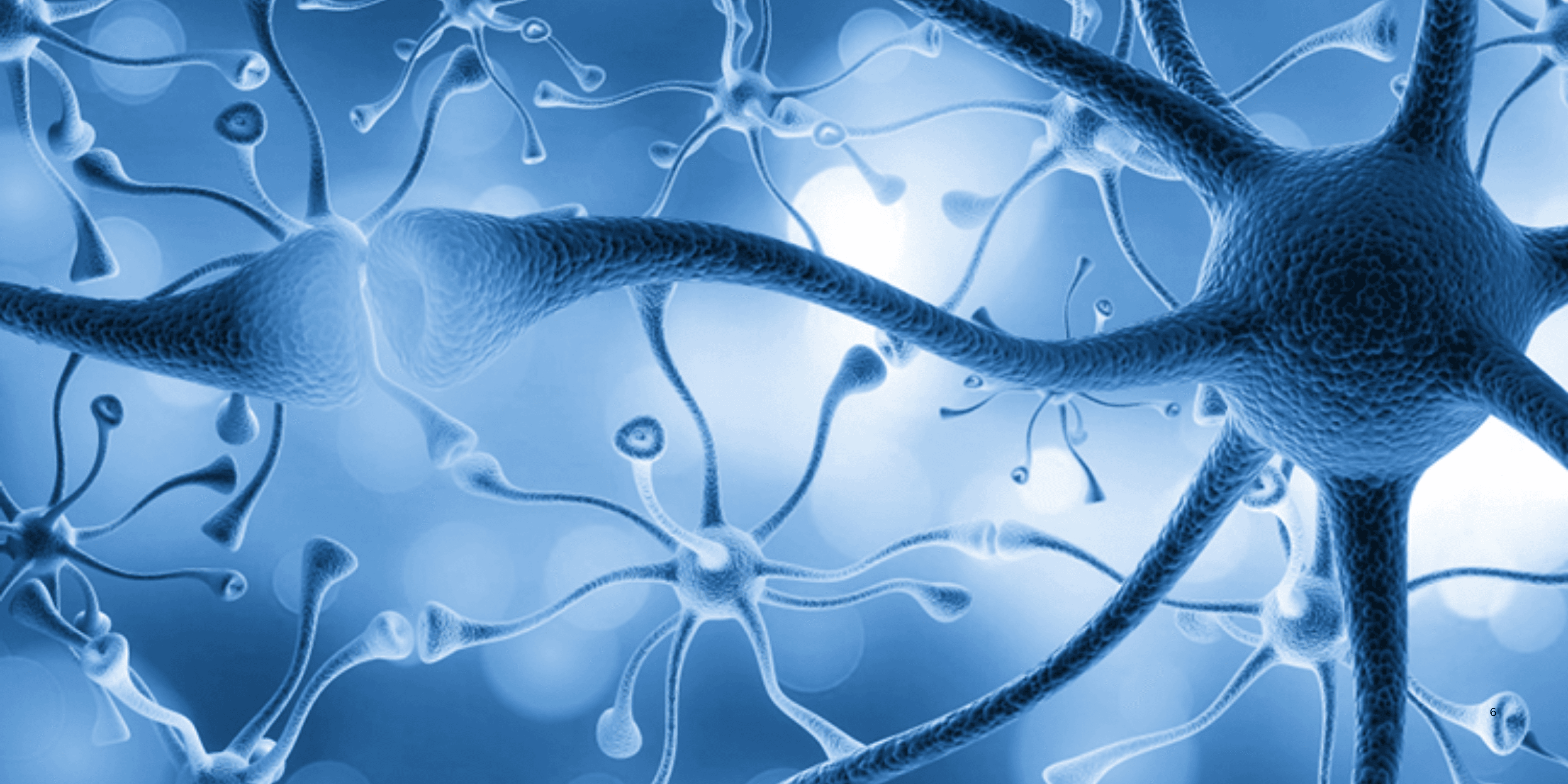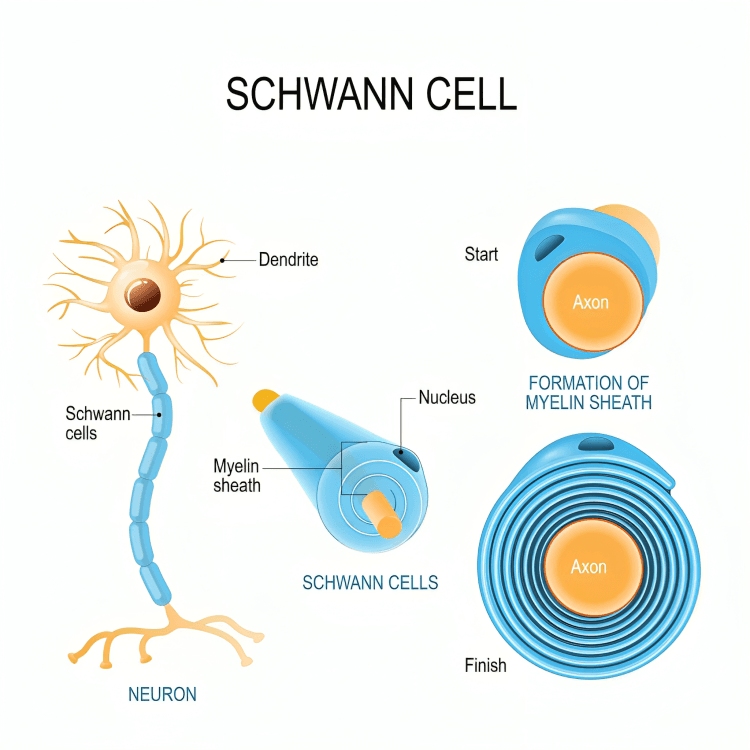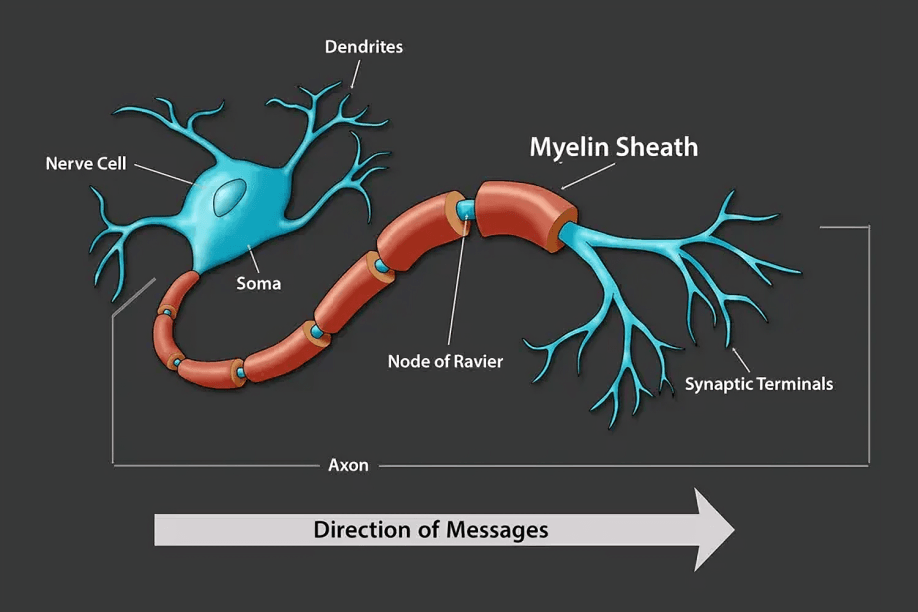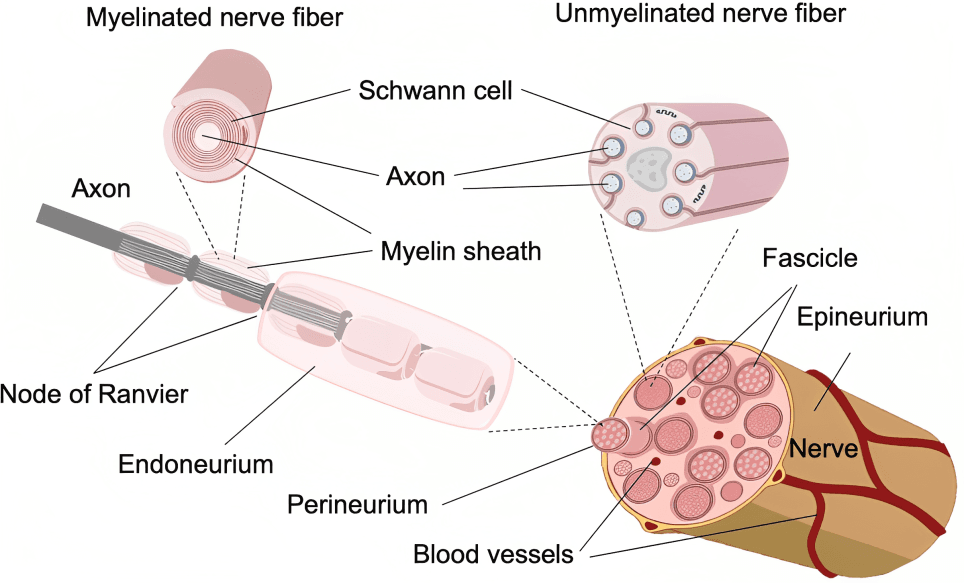
“
Nerve Damage and Regeneration is a field that bridges biology, medicine, and neurology, explaining how injuries to the nervous system may result in loss of sensation, movement, or function—and how the body and modern science strive to repair such damage. While some nerves, especially in the peripheral nervous system, can regenerate, others, like those in the central nervous system, pose greater challenges. 1
1
”
Dr. Jean-Martin Charcot, a French neurologist, suggested that regular stimulation and rehabilitation could promote partial nerve recovery in patients suffering from long-term neurological injuries or damage.1
When a peripheral nerve is injured, the part beyond the damage point degenerates—a process called Wallerian degeneration—clearing the path for new axonal growth from the remaining healthy portion. 2

Schwann cells are crucial to nerve regeneration, wrapping around the damaged nerves and releasing growth factors that guide new axon sprouts toward their original target tissues after peripheral nerve injury.
Unlike peripheral nerves, central nervous system nerves have limited regeneration potential due to inhibitory molecules and the absence of supportive cells like Schwann cells that guide axonal regrowth. 3
Regeneration in the peripheral nervous system typically proceeds at about one millimeter per day, which means that recovery from long-distance nerve injuries can take months or even years. 4
Physical therapy and repetitive task practice after nerve injury promote cortical reorganization and help the brain adapt to new nerve pathways, accelerating function recovery and improving sensation. 5
Vitamin B12 is essential for nerve health and repair; deficiencies in B12 can slow regeneration and worsen the impact of nerve injuries by impairing myelin sheath restoration. 6
Scientists have discovered that electrical stimulation near the damaged nerve site can boost axon regrowth, reactivating regeneration pathways that are typically dormant or slow in injured adult neurons. 7
Traumatic nerve injuries such as those from car accidents or severe cuts can cause total nerve rupture, often requiring surgical intervention like nerve grafting or nerve transfer to restore some function. 8
Chronic diabetes can cause diabetic neuropathy, where high blood sugar damages small blood vessels that supply nerves, leading to peripheral nerve damage and reduced nerve regeneration.9

Myelin sheaths, which insulate nerve fibers, must be rebuilt during regeneration. If the myelin-forming cells are damaged, even regrown axons may conduct signals inefficiently, leading to persistent symptoms.
Research into stem cell therapy shows promise for nerve regeneration, where specially prepared cells are implanted into damaged nerve areas to replace lost neurons or stimulate existing ones to grow. 10
Pain following nerve injury—neuropathic pain—can persist long after the damage occurs, often because misdirected or poorly regenerated nerve fibers send incorrect signals to the brain. 11
Cold temperatures can slow nerve regeneration by restricting blood flow and cellular activity, while warmth, moderate exercise, and proper blood circulation tend to support quicker nerve repair. 12
Surgical methods like end-to-end nerve repair involve directly reconnecting the severed nerve ends, while nerve grafts insert tissue from another part of the body to bridge larger gaps in nerve damage. 13

After injury, nerve regeneration is influenced by age; younger individuals tend to regenerate nerves faster and more effectively than older adults, partly due to higher cellular plasticity and more active support cells.
Regenerated nerves may not always reconnect with their original targets, leading to altered sensation or muscle movement—a common outcome in complex nerve injuries requiring fine motor coordination. 14
Bioengineered scaffolds—tiny tubes with growth factors—are being developed to bridge severed nerves and guide regrowth, showing promising results in early animal studies.15
In spinal cord injuries, the lack of regenerative success is largely due to glial scar formation, which creates a physical and chemical barrier preventing axons from crossing the damaged area. 16
Recovery from nerve injury is highly individual—while some people regain full function, others experience permanent deficits due to scarring or insufficient regrowth despite early and aggressive treatment.17


